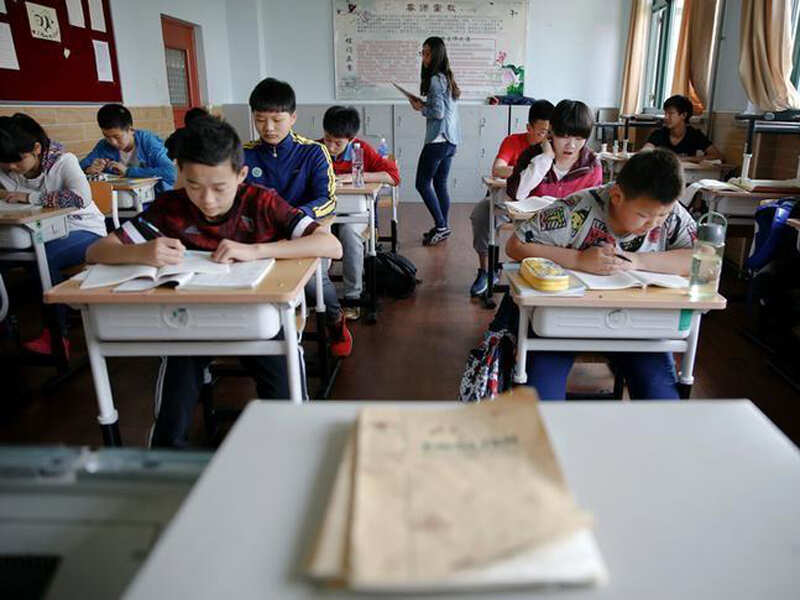Vietnam tops list of biggest winners from US-China trade war
Bloomberg | Updated: Jun 4, 2019, 17:50 ISTHighlights
- Nomura started with the official tariff lists of product codes and compared those with monthly trade data of the same goods -- incorporating the levies on $250 billion in Chinese goods and $110 billion in US products
- The analysts estimated the gain for the world’s top 50 economies in the 12-month period
 (Representative image)
(Representative image)NEW DELHI: Vietnam is by far the biggest winner from the US-China trade war so far as importers look to divert their orders to bypass higher tariffs.
The Southeast Asian nation, which shares a border with China, gained orders from trade diversion on tariffed goods equal to 7.9% of gross domestic product in the year through the first quarter of 2019, according to a study by Nomura Holdings Inc economists Rob Subbaraman, Sonal Varma and Michael Loo. Taiwan is a distant second among the winners, with gains equivalent to 2.1% of GDP. Both economies gained far more from US tariffs on China than from Chinese duties on the US.
American and Chinese orders for more than half of the 1,981 tariffed products in the US-China trade dispute thus far have been re-routed, upending the winners and losers in the global supply chain, the analysis shows.
Nomura started with the official tariff lists of product codes and compared those with monthly trade data of the same goods -- incorporating the levies on $250 billion in Chinese goods and $110 billion in US products. The analysts estimated the gain for the world’s top 50 economies in the 12-month period.
US tariffs on China have prompted import substitution primarily in electronic products, followed by furniture and travel goods. For China’s duties on the US, orders for soybeans, aircraft, grains and cotton were most likely to be diverted away from the US to third-party economies like Chile and Argentina.
The Nomura analysts see potential for significantly more disruption in the electronics supply chains, given US-China disputes over technology, including American restrictions on Chinese giants Huawei Technologies Co and ZTE Corp.
More than half of the top 20 American companies listed on the Standard & Poor’s 500 Index with net sales in China are electronics firms, with a combined revenue of $144 billion last year, according to the note.
The Southeast Asian nation, which shares a border with China, gained orders from trade diversion on tariffed goods equal to 7.9% of gross domestic product in the year through the first quarter of 2019, according to a study by Nomura Holdings Inc economists Rob Subbaraman, Sonal Varma and Michael Loo. Taiwan is a distant second among the winners, with gains equivalent to 2.1% of GDP. Both economies gained far more from US tariffs on China than from Chinese duties on the US.
American and Chinese orders for more than half of the 1,981 tariffed products in the US-China trade dispute thus far have been re-routed, upending the winners and losers in the global supply chain, the analysis shows.
Nomura started with the official tariff lists of product codes and compared those with monthly trade data of the same goods -- incorporating the levies on $250 billion in Chinese goods and $110 billion in US products. The analysts estimated the gain for the world’s top 50 economies in the 12-month period.
US tariffs on China have prompted import substitution primarily in electronic products, followed by furniture and travel goods. For China’s duties on the US, orders for soybeans, aircraft, grains and cotton were most likely to be diverted away from the US to third-party economies like Chile and Argentina.
The Nomura analysts see potential for significantly more disruption in the electronics supply chains, given US-China disputes over technology, including American restrictions on Chinese giants Huawei Technologies Co and ZTE Corp.
More than half of the top 20 American companies listed on the Standard & Poor’s 500 Index with net sales in China are electronics firms, with a combined revenue of $144 billion last year, according to the note.
Download The Times of India News App for Latest Business News.







































All Comments ()+^ Back to Top
Refrain from posting comments that are obscene, defamatory or inflammatory, and do not indulge in personal attacks, name calling or inciting hatred against any community. Help us delete comments that do not follow these guidelines by marking them offensive. Let's work together to keep the conversation civil.
HIDE